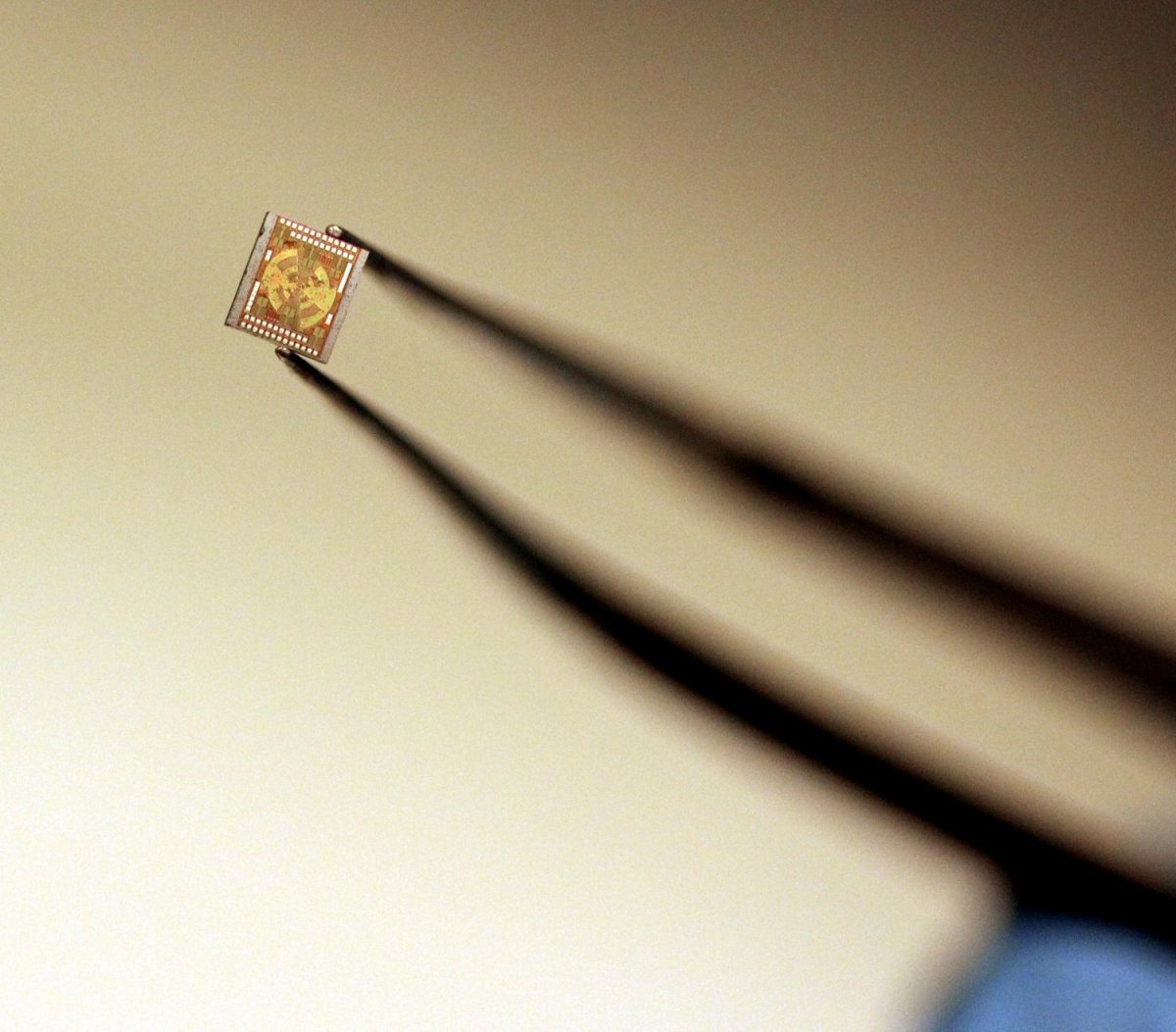
The Better to See Through With
Previously, imaging technology that relied on terahertz waves was limited to a clunky setup of tabletop devices, lasers, and mirrors. Now, thanks to the work of researchers from Princeton University, the size of this equipment has dramatically decreased, changing from a massive setup to a pair of microchips that fit on the tips of your fingers.
Terahertz waves are electromagnetic pulses that last one millionth of one millionth of a second, and they can pass through most nonconductive materials, like fabric or cardboard. They also have less energy than X-rays, which means that they don’t damage human tissue or DNA. Widespread use of this type of wave has been limited only by the bulk setup of the technology.
“The system is realized in the same silicon chip technology that powers all modern electronic devices from smartphones to tablets, and therefore costs only a few dollars to make on a large scale,” said lead researcher Kaushik Sengupta, whose work was published in two articles that appear in the IEEE Journal of Solid State Circuits. One article covers a microchip that generates terahertz waves, while the other one is about a chip that can capture and read those waves.

Smaller is Key
To miniaturize the devices involved in transmitting and reading terahertz waves, the research team analyzed how an antenna functions. Terahertz waves interact with metal structures inside a chip, creating a complex distribution of electromagnetic fields unique to the incident signal. The researchers saw that these patterns could be read as a form of signature to identify the waves, which could be done by tiny devices inside a chip.

“Instead of directly reading the waves, we are interpreting the patterns created by the waves,” Sengupta said. “It is somewhat like looking for a pattern of raindrops by the ripples they make in a pond.”
Brown University engineering professor Daniel Mittleman said that this development is “a very innovative piece of work, and it potentially has a lot of impact.” Indeed, the applications of such a technology are promising. It could greatly improve medical imaging devices, even lowering their costs, and play a key role in future medical imaging technology and specialized treatments. Still, a great deal of work still needs to be done before this technology could be developed further or be made available for public use.